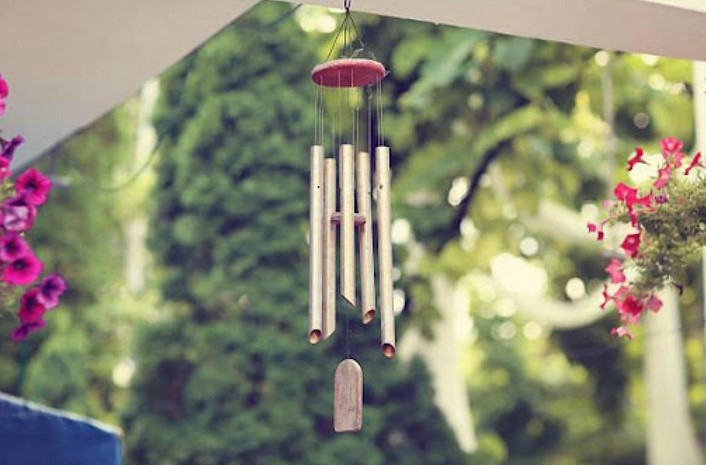Exploring Different Materials: Choosing the Perfect Components for Your Windchimes

Source : https://images.timesproperty.com
Introduction
Windchimes have been captivating people for centuries with their melodious tunes that dance on the breeze. These charming ornaments not only add a touch of beauty to outdoor spaces but also create a soothing and relaxing atmosphere. One of the key factors that determine the sound and visual appeal of windchimes is the materials used in their construction. In this article, we will explore various materials that can be used to create the perfect components for your windchimes, and how each material contributes to the overall aesthetic and auditory experience.
The Art of Windchime Crafting
Creating a harmonious symphony of sound requires careful consideration of the materials that comprise a windchime. Each component, from the striker to the tubes, plays a crucial role in producing the desired tones. Windchime crafting is not only a combination of artistic expression but also a science of acoustics. When exploring different materials, one must take into account factors such as density, thickness, and resonance.
Metal Magic
Metal is a popular choice for windchime components due to its durability and versatility. Aluminum, for instance, is a lightweight metal that produces bright and tinkling tones. Its corrosion-resistant properties make it an excellent choice for outdoor installations. Copper, on the other hand, offers a mellower and richer sound, and over time, it develops a unique patina that adds character to the windchime. Steel tubes produce a deeper and more resonant sound, perfect for those seeking a more profound auditory experience.
The Allure of Glass
Glass windchimes exude elegance and visual charm. The delicate clinking of glass pieces creates a gentle and ethereal melody that is both enchanting and calming. Glass windchimes are often adorned with colorful and intricate designs, adding a whimsical touch to outdoor spaces. The choice of glass type, such as stained glass or recycled glass, can significantly impact the visual and auditory experience of the windchime.
Wooden Wonders
Wooden windchimes offer a warm and organic aesthetic. The natural resonance of wood produces softer and soothing tones, making them an excellent choice for those who prefer a subtle and gentle ambiance. Different types of wood, such as bamboo, cedar, and pine, each have their unique tonal qualities. Bamboo, with its hollow structure, creates a melodic and meditative sound, while cedar produces a deeper and more resonating note.
Exploring Novelty Materials
For the adventurous and creative spirits, windchimes can be crafted from unconventional materials. Seashells can be strung together to create a coastal-inspired windchime that mimics the soothing sounds of the ocean. Vintage silverware can be repurposed into a whimsical and eclectic windchime that produces a playful melody. These unconventional materials add a unique flair to windchime crafting, allowing individuals to express their creativity in unconventional ways.
Harmony of Mixed Materials
Combining different materials can lead to an exciting interplay of tones and textures. A windchime with metal, glass, and wooden elements can create a harmonious blend of bright, delicate, and earthy sounds. The placement of materials along with the design of the windchime also plays a role in determining how these materials interact with each other. Finding the right balance between materials is an art that can result in a truly mesmerizing windchime.
Considerations for Outdoor Use
When choosing materials for windchimes intended for outdoor use, it’s crucial to consider their durability and resistance to weather conditions. Metals like stainless steel and aluminum are excellent choices due to their resistance to rust and corrosion. Hardwoods like teak and cedar are naturally resistant to decay, making them suitable for outdoor environments. Glass windchimes should use tempered glass to ensure they can withstand temperature changes without shattering.
Personal Preference and Aesthetics
Ultimately, the choice of materials for windchime components depends on personal preference and the desired aesthetic and auditory experience. Some individuals might be drawn to the elegance of glass, while others find solace in the rustic charm of wood. The tones produced by different materials can evoke various emotions, so it’s essential to consider what feelings you want your windchime to evoke in both yourself and others.
Conclusion
In the world of windchime crafting, materials are more than just the building blocks; they are the essence of the windchime’s character. Whether you’re drawn to the melodious tinkling of glass, the resonant tones of metal, or the organic warmth of wood, each material brings its unique magic to the symphony of sounds. By exploring various materials and experimenting with their combinations, you can create a windchime that not only complements your outdoor space but also resonates with your soul. So, embark on this creative journey, and let the materials you choose compose a captivating tale carried by the winds.